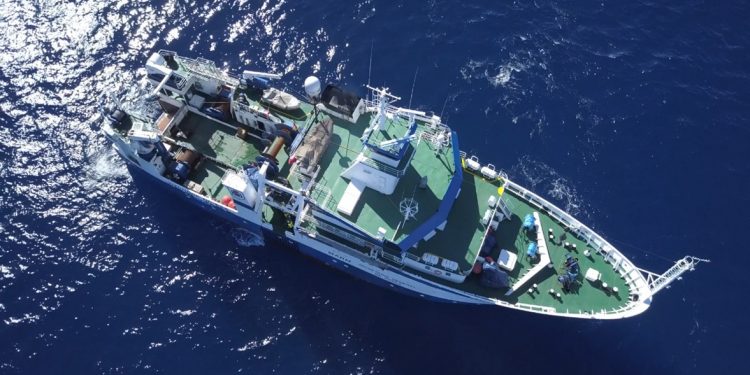Research vessel vessel Vizconde de Eza is on its way from Vigo across the Atlantic to carry out a fisheries research survey on the Grand Banks off Newfoundland on behalf of the Spanish Ministry of Agriculture, Fisheries and Food and the Institute of Oceanography.
The Platuxa research survey covers waters in the NAFO regulation area, which are of significant commercial importance for the Spanish fleet.
The main objective is the collection of data that makes it possible to assess the abundance, biomass and demographic structure of the stocks of interest in the 3NO divisions (international waters adjacent to Canada’s EEZ), up to a maximum depth of 1500 meters.
The survey takes place from 12th June to 2nd July and data will be gathered on catches, sizes, biological parameters, samples for growth and reproduction, as well as the trophic chain of species such as flounder, cod, green halibut, redfish, dab and other species.
This type of demersal trawl survey is one of the main methods of direct study of fishing populations, meeting the need for independent data on fishing activity for the correct management of fish populations.
The Platuxa research survey has been developed continuously since 1995 on the initiative of the Spanish administration. This year marks the 29th such survey. The information obtained is used by the Scientific Council of the Northwest Atlantic Fisheries Organization to evaluate fishery resources on the Great Banks of Newfoundland.
As in previous surveys, Platuxa 2024 is developed in coordination with the IEO, which is responsible for its scientific management.
Oceanographic vessel Vizconde de Eza forms, together with Miguel Oliver and Emma Bardán, the fishing and oceanographic research fleet of the General Secretariat of Fisheries. Throughout its career, Vizconde de Eza has far been involved with more than a hundred research surveys.
At 53 meters, it is one of the most sophisticated research vessels aflaot, and is equipped with dynamic positioning and propulsion the ensures silent runnning for the acquisition of acoustic data, free of vibrations and noise.









